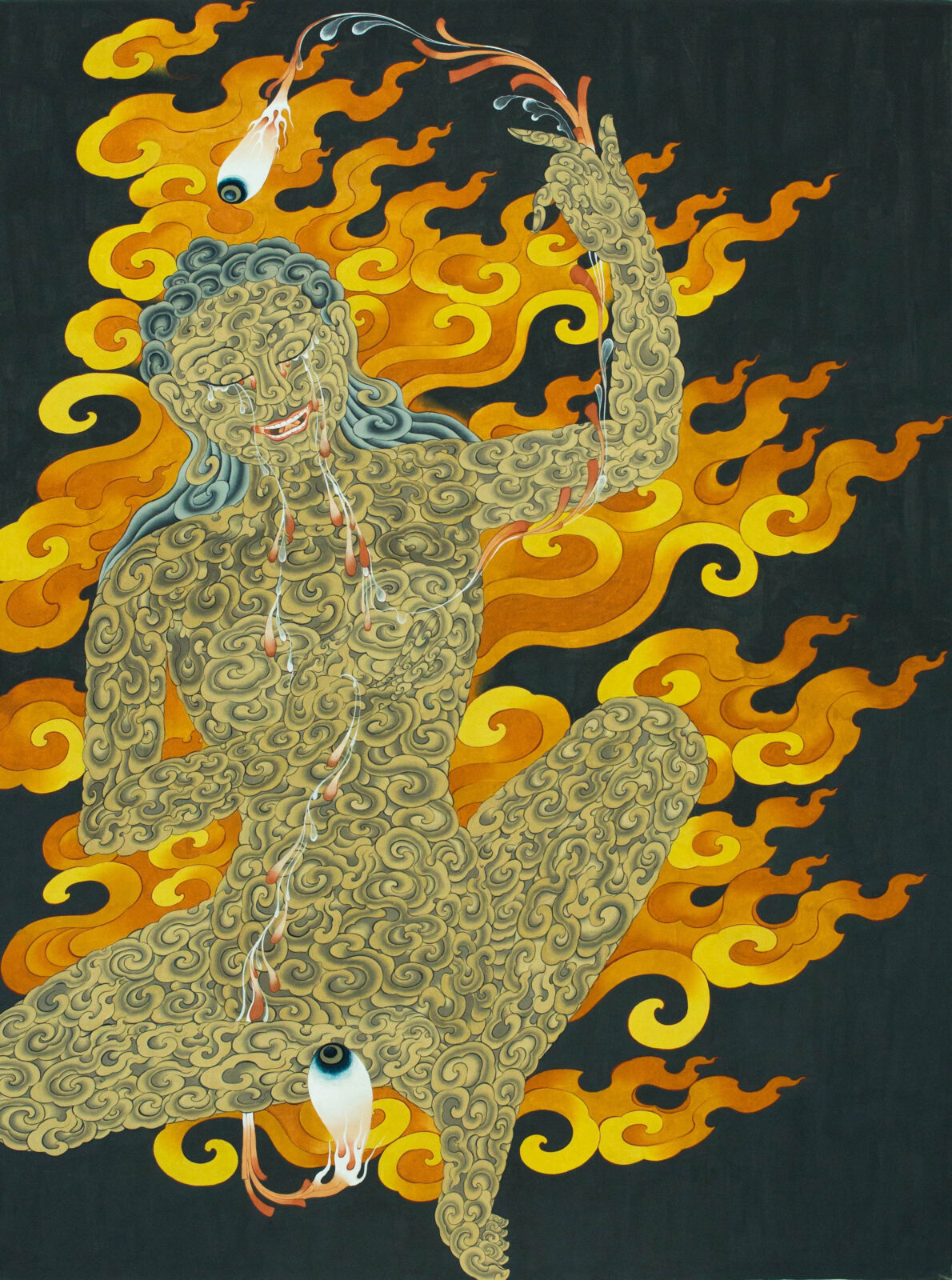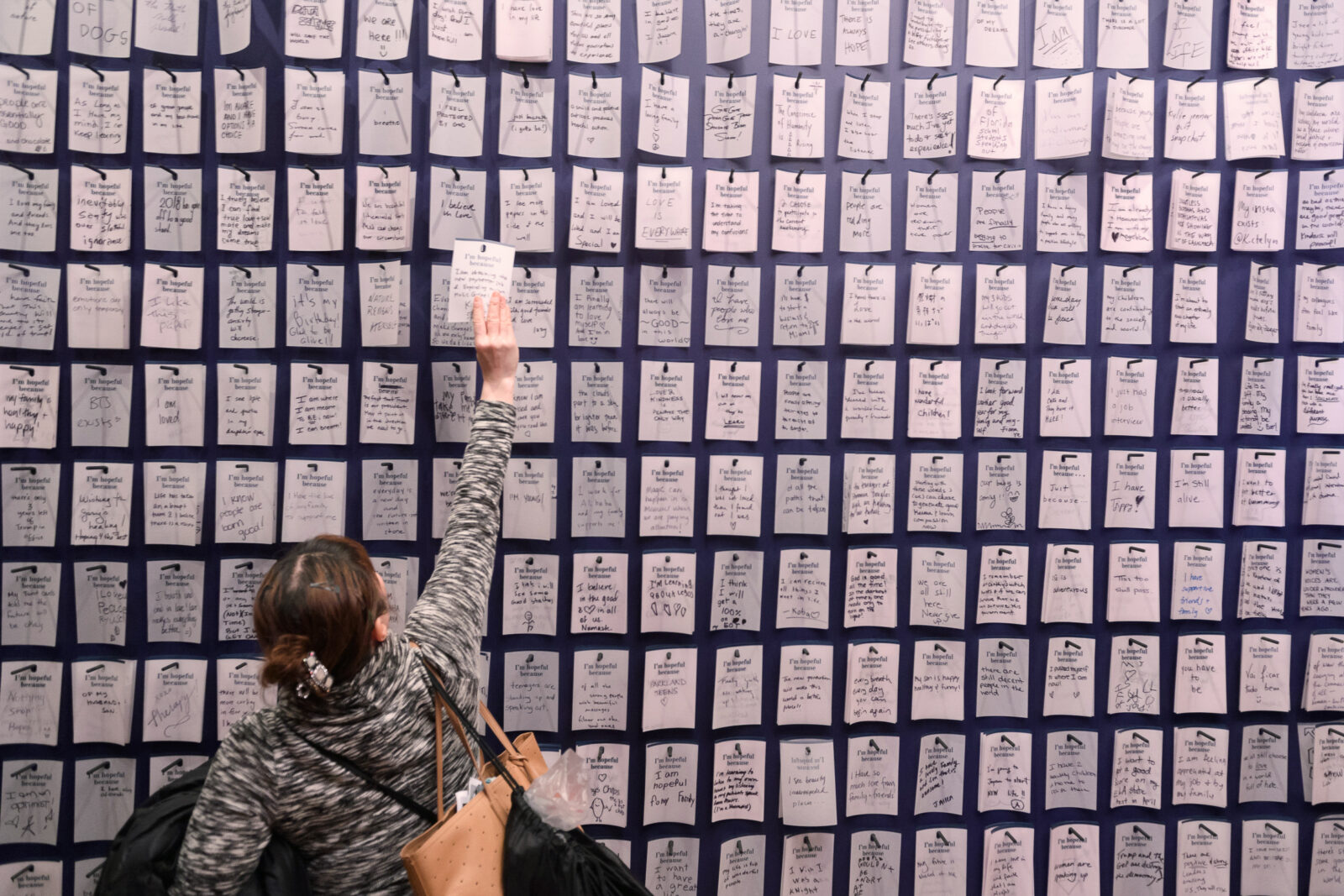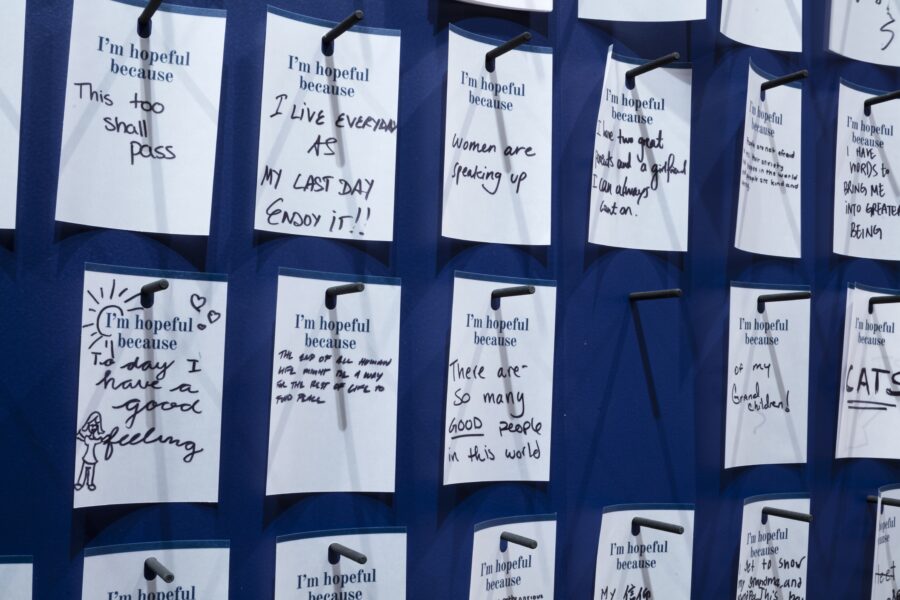
Illustration by Gyempo Wangchuk.

Illustration by Gyempo Wangchuk.
Emotions that stand still are not emotions. By their nature emotions are agents of change; they are meant to shift from state to state, moment to moment. Our emotions are most likely to transform, and have a transformative impact on our lives, when we engage with them, sit with them, when we become proficient in the practice of RAIN: recognize, accept, investigate, and nurture. To do so we must be awake to our internal worlds, even when emotions like anxiety, anger, and sadness are so painful. Perhaps especially when they are painful.
Emotions are residents of the massive, dynamic universe that is the brain. I study emotion regulation, the ability to monitor and modify the experience and expression of emotions. Crucially, regulation doesn’t just mean dampen or suppress. Regulation means change. The logo of my research lab, The Emotion Regulation Lab, is a branching, tree-like circuit. It evokes not only neural networks of the brain—connections—but also metamorphosis, from several to many, from the constrained to the expansive, from the deconstruction of emotion to its transformation.
Evidence of the transformation of emotion was on full view if you walked into the Rubin Museum in 2018, where A Monument for the Anxious and Hopeful stood in the light-filled foyer, across from the giant spiral staircase and adjacent to the exquisite sculpture of a snow lion standing guard at the elevators. The participatory art installation, created by artist Candy Chang and writer James A. Reeves, invited visitors to share their anxieties and hopes by finishing one of two sentences printed on respective cards: “I am hopeful because . . .” or “I am anxious because . . .” Visitors then placed the cards on hooks fixed to a wall divided by two colors: blue for hopes and red for anxieties.

Placing a hope card on A Monument for the Anxious and Hopeful.
Over the year I joined thousands of others—by the end over 55,000 cards were submitted—in contributing my hopes and anxieties to the monument. The words on the cards seemed to move together like a wave, ebbing and flowing with thoughts and ideas, changing with issues of the day, playing off each other, contradicting each other, and forming themes and variations. The cards reflected the political and the personal, immense optimism and fear:
Racism is destroying us.
I don’t know if I will find love again.
People with bad GPAs can still be successful!
She said yes!
It was not obvious unless you looked closely, but the juxtaposition of the two card types revealed a pattern: the anxieties and hopes were often the same. I’m anxious because I have a job interview; I’m hopeful because I have a job interview. I’m anxious because people are fighting over politics; I’m hopeful because people are fighting over politics. The monument showed how anxiety and hope go hand in hand. They may even be two sides of the same coin. As Chang and Reeves wrote about the installation, “Anxiety and hope are defined by a moment that has yet to arrive.” Put another way, when we imagine and prepare for the uncertain future, anxiety and hope are intrinsically intertwined, forever transforming from one to another.
The fact of emotional transformation is not only beautiful but also comforting, because it resonates with our intuition that in order to be fully alive and aware—to be awake—we must accept our humanity, which is ever-changing. To a scientist like me, it is also a reminder of a fundamental lesson we learn when we observe the wondrous architecture and activities of the brain.
That lesson: there is strength in impermanence. Although in real terms, we know very little about the brain—from how it works to how consciousness emerges—one thing students of the brain know for sure is that it is an engine of change: dynamic, massively parallel, and emergent, operating at multiple timescales, from milliseconds to years, through a panoply of electrochemical, genetic, and epigenetic processes. And from this dizzying array of impermanent states emerges a powerful still point—an emotionally animated sense of a self that is enduring yet also capable of transformation.
When our children are emotionally overwrought, distressed by anxiety and strong emotions, parents and teachers the world over comfort them by describing what has always been true: emotions are not forever. Wait a moment to recognize, accept, investigate, and nurture these changing feelings. Wait a moment, and you will awaken to the inevitability of impermanence and the nourishing possibility of transforming feelings like anxiety into feelings of hope.

Tracy A. Dennis-Tiwary, PhD, is a professor of psychology and neuroscience at The City University of New York. As director of the Emotion Regulation Lab, she conducts NIH-funded research on anxiety, suicide, and digital therapeutics for stress and anxiety. She is the cofounder of Arcade Therapeutics, which translates cutting-edge science into digital tools for behavioral health, and co-executive director of the Center for Health Technology at Hunter College. She is the author of Future Tense: Making Anxiety Our Superpower.

Rubin Museum
150 W. 17th St., NYC
Get the latest news and stories from the Rubin, plus occasional information on how to support our work.